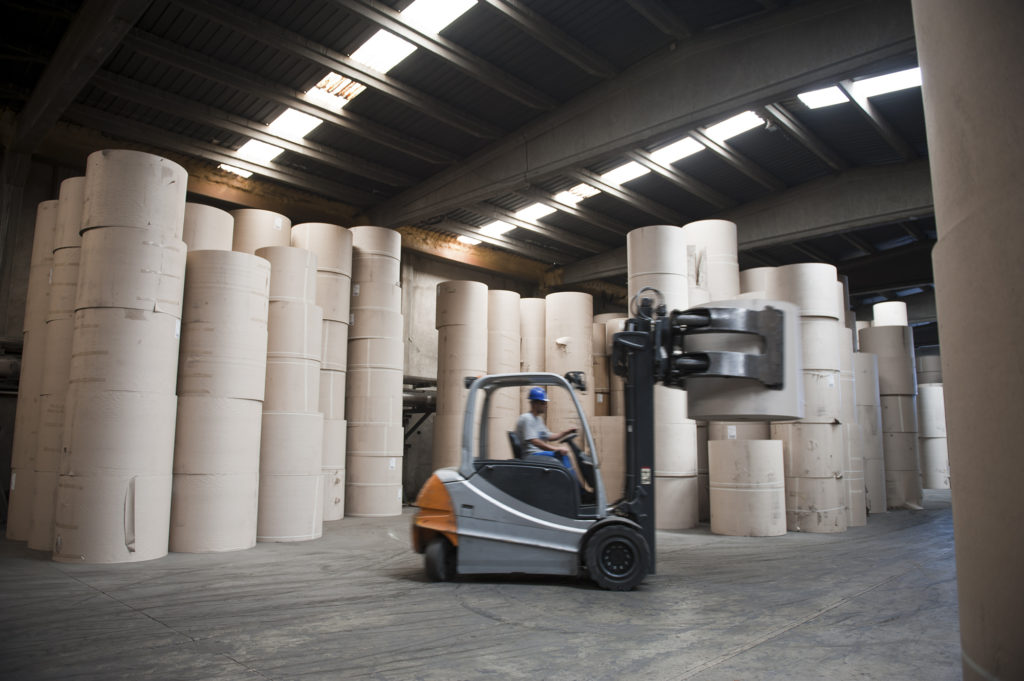The pulp, paper, and packaging industries are vital sectors that play a crucial role in supplying essential products for various applications. Each of these industries encompasses a range of processes and operations aimed at producing paper, cardboard, and packaging materials used in diverse sectors such as retail, food and beverage, pharmaceuticals, and more.
Here’s an overview of some key aspects within these industries:
Waste Transfer
Waste Paper Management:
- Sorting and Classification: Waste paper is sorted based on its grade, quality, and suitability for recycling or disposal. Various categories of waste paper include mixed paper, cardboard, newsprint, and office paper.
- Baling and Compaction: Waste paper is compacted into bales using balers, making it easier to handle, transport, and store for recycling or disposal.
- Recycling Processes: Waste paper undergoes recycling processes such as pulping, deinking, and refining to produce recycled pulp, which can be used to manufacture new paper and packaging products.
Trim and Reject Handling:
- Trimmings and rejects generated during the paper and packaging manufacturing processes are collected and processed for recycling or disposal.
- Trim removal systems are used to efficiently remove excess material from paper and packaging products, minimizing waste and optimizing production efficiency.
Package Printing
Printing Technologies:
- Flexography: Utilizes flexible relief plates and fast-drying inks, making it suitable for high-volume printing of packaging materials such as labels, corrugated boxes, and flexible packaging.
- Gravure Printing: Employs engraved cylinders to transfer ink onto substrates, offering high-quality and consistent printing for applications requiring fine detail and vibrant colors.
- Offset Lithography: Uses printing plates and offset cylinders to transfer ink onto a rubber blanket before transferring it to the printing surface, ideal for high-quality, large-volume printing of packaging materials.
- Digital Printing: Enables variable data printing and short print runs with minimal setup time, making it suitable for personalized packaging and prototyping applications.
Color Management and Quality Control:
- Color matching and consistency are crucial in package printing to ensure brand integrity and product appeal.
- Spectrophotometers and color management software are used to measure and control color accuracy throughout the printing process.
Bulk Ink Transfer
Ink Storage and Handling:
- Inks are stored in bulk containers such as tanks or drums and transferred to printing machines via pumping systems.
- Proper ink storage and handling procedures are essential to maintain ink quality and prevent contamination.
Pumping Systems:
- Air-operated diaphragm pumps, centrifugal pumps, and peristaltic pumps are commonly used for bulk ink transfer, offering precise control over flow rates and pressures.
Printing Machine Dispensing
Fluid Dispensing Systems:
- Printing machines are equipped with fluid dispensing systems that control the flow and distribution of ink, coatings, adhesives, or other fluids onto substrates.
- Precision dispensing systems ensure accurate placement and coverage of fluids, minimizing waste and optimizing print quality.
Automated Control Systems:
- Printing machines utilize automated control systems to adjust fluid flow rates, pressures, and nozzle positions, enabling precise and consistent dispensing across various printing applications.
Role of Our Pumps in Pulp, Paper, and Packaging Industry
Air-operated double diaphragm pumps play a crucial role in the pulp, paper, and packaging sectors. These pumps offer several advantages that make them suitable for handling a wide range of fluids and materials in these industries:
Versatility: AODD pumps can handle viscous, abrasive, and shear-sensitive fluids commonly found in pulp, paper, and packaging processes. They can pump everything from thin solvents to thick slurries with ease.
Self-Priming: Air-operated double diaphragm pumps are capable of self-priming, meaning they can evacuate air from the suction line and start pumping without the need for manual priming. This feature is beneficial for handling fluids with high gas content or when the pump needs to be mounted above the fluid level.
Dry Running: AODD pumps can run dry without damage for short periods, making them suitable for applications where fluid flow may be intermittent or unpredictable.
Sealless Design: AODD pumps have a sealless design, which reduces the risk of leakage and eliminates the need for external lubrication. This feature is particularly important when handling hazardous or corrosive fluids commonly found in industrial processes.
Adjustable Flow Rate and Pressure: The flow rate and pressure of AODD pumps can be easily adjusted by changing the air pressure supplied to the pump. This flexibility allows operators to fine-tune pump performance to meet the specific requirements of their application.
The pulp, paper, and packaging industries encompass a wide range of processes and operations aimed at producing high-quality paper products and packaging materials. Efficient waste management, precise printing techniques, bulk ink transfer, and controlled dispensing are key aspects that contribute to the overall success and sustainability of these industries. In this industry, AODD pumps are commonly used for transferring various chemicals, including bleaching agents, coatings, adhesives, and dyes. They are also utilized in paper stock preparation, wastewater treatment, and various other processing applications.



Get Social